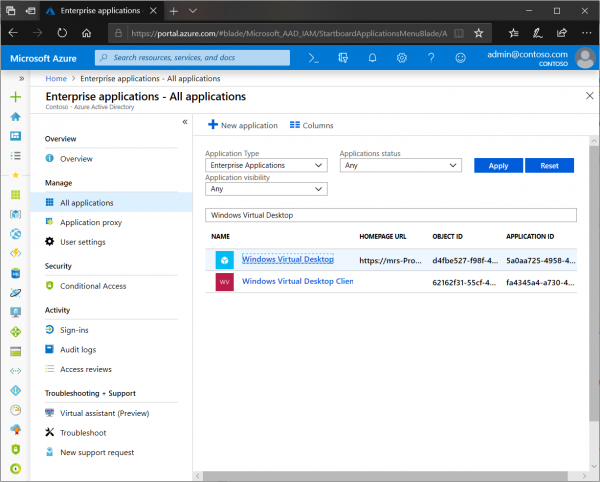As more enterprises move to the cloud, Microsoft has introduced Windows Virtual Desktop. It helps companies deploy and scale Windows and Office on Azure without compromising security and compliance. Imagine this as Windows on the cloud, where you buy desktop space and pay for hourly usage. The most significant advantage is that if the business doesn’t want to maintain infrastructure, manage a full-fledged IT department; this can be your choice.

Windows Virtual Desktop
Before we start, I want to point to a discussion we did — Windows as a Service or Windows as a SaaS. It is what is now is finally happening. If you are a company that doesn’t have a lot of in-premises requirements, you can move everything to the cloud. If not, everything may be partially lowering the overall cost.
Windows Virtual Desktop – Here are the key features and functionality:
- Services like a gateway, licensing, and diagnostics are offered as a service in Azure.
- Migrate Windows Server remote desktops and apps to Azure
- Azure Active Directory (Azure AD) as the identity provider. You can use security controls like multifactor authentication (MFA) or limited access.
- Access to Active Directory joined virtual machines (VMs) will be provided using Azure AD identities.
- If you use Active Directory Federation Services (AD FS) for single sign-on (SSO), then the sign-on experience will be seamless.
- Virtual machines in Windows Virtual Desktop run isolated using a private IP without exposing themselves to the internet.
- Windows multi-session offers a Windows Enterprise experience where multiple users can log into the same Windows client VM simultaneously via RDP.
- Access to FSLogix technology, making your Office experience in a non-persistent environment feel like you are using a traditional PC.
- It supports full desktop, RemoteApp, and persistent or non-persistent, dedicated or multi-session experiences.
- Quickly virtualize and deploy modern and legacy desktop apps to the cloud in minutes
List of supported Operating System
- Windows 11 and Windows 10 multi-session and single-session
- Windows 7 single-session
- Windows Server 2012 R2 and newer operating systems.
The Business mode for Windows Virtual Desktop
Microsoft has tied up this with Windows 10 Enterprise and Microsoft 365 licenses. If you have it, you can access Windows 10 Enterprise and Windows 7 Enterprise at no extra cost. If you have Microsoft Remote Desktop Services (RDS) Client Access License (CAL), then there is no additional cost. Here is the list
Windows 10 Enterprise multi-session or Windows 10 Enterprise
Microsoft 365 E3, E5, A3, A5, F1, Business Windows E3, E5, A3, A5
Windows 7 Enterprise
Microsoft 365 E3, E5, A3, A5, F1, Business Windows E3, E5, A3, A5
Windows Server 2012 R2, 2016, 2019
RDS Client Access License (CAL) with Software Assurance
However, you pay only for the Azure compute, storage, and networking associated with the virtual machines you use in your environment. Microsoft is also offering a 72% discount if you choose one-year or three-year Azure Reserved Virtual Machine Instances. You can always exchange or cancel reservations as your needs evolve.
Find more details on WVD documentation page.
Leave a Reply